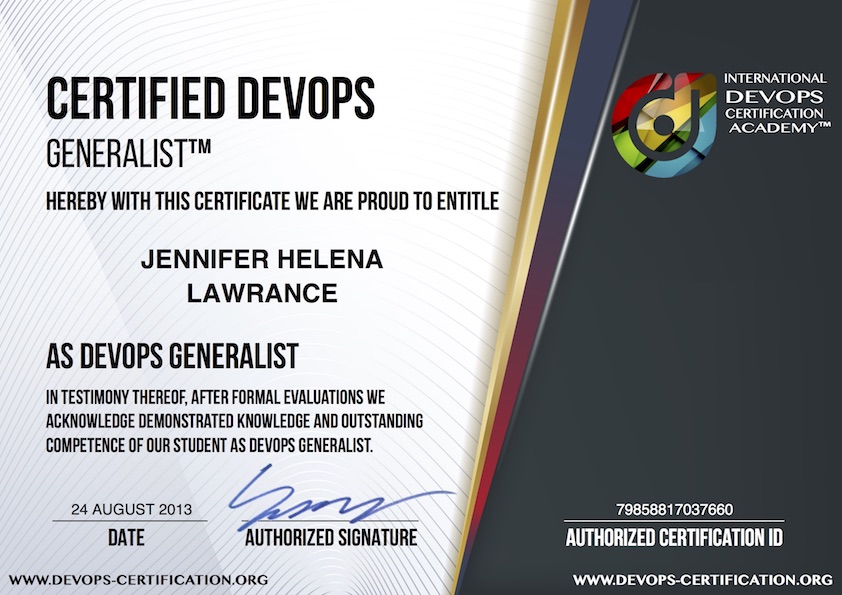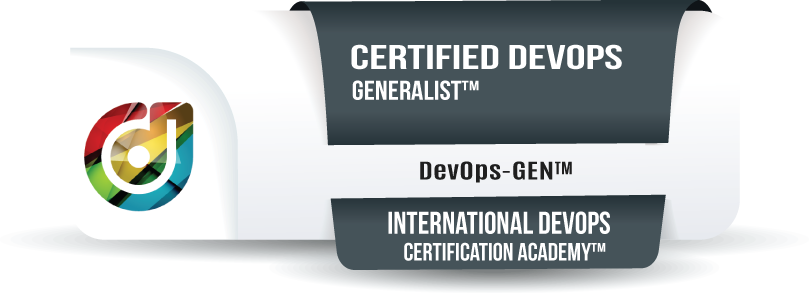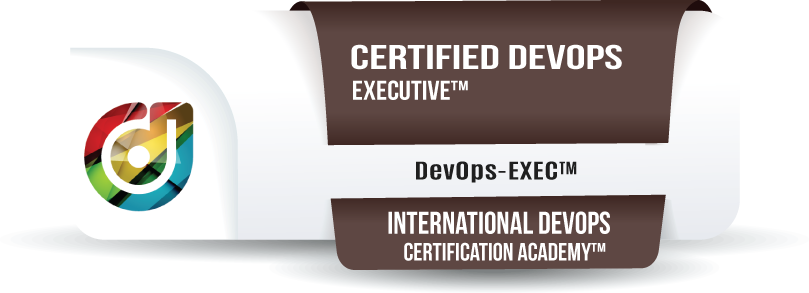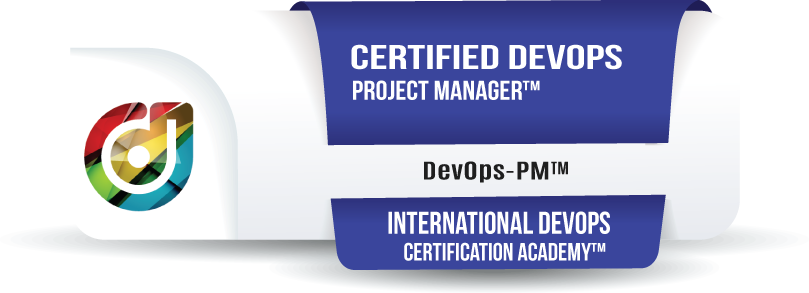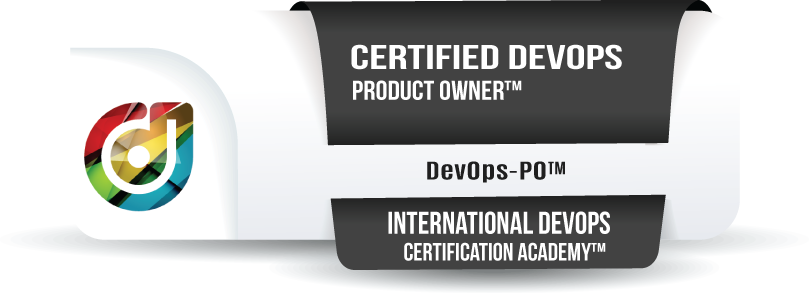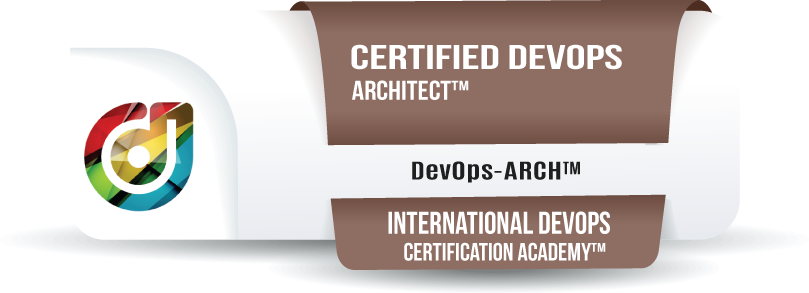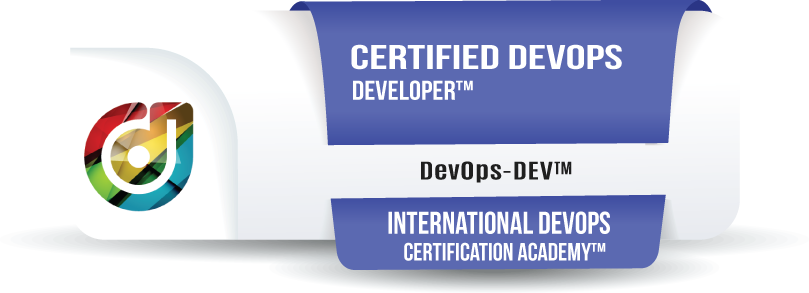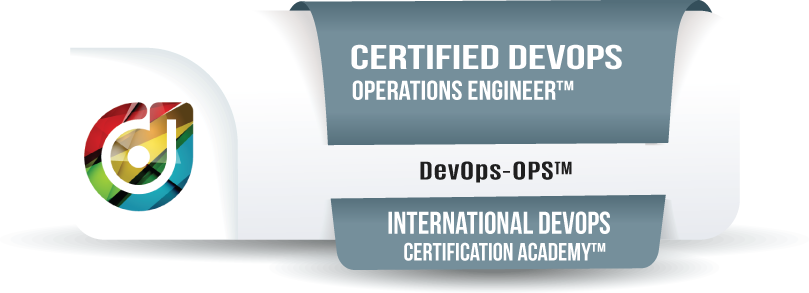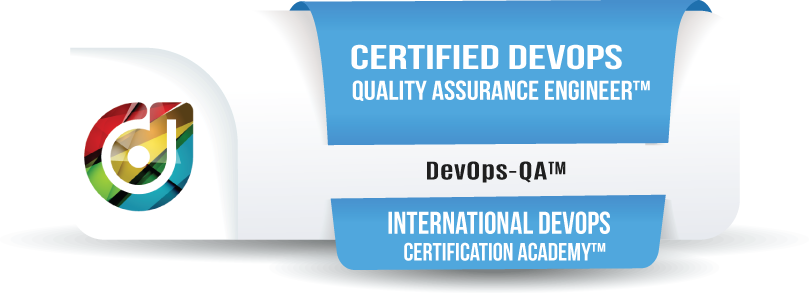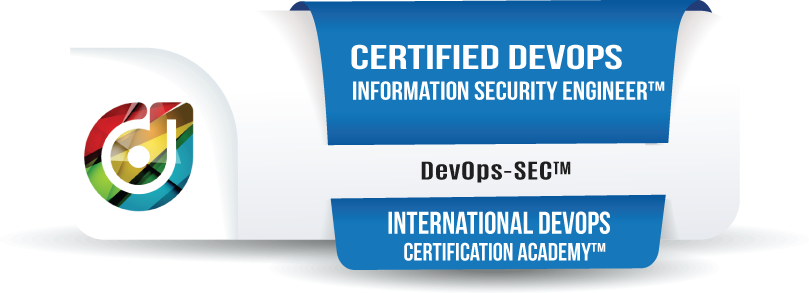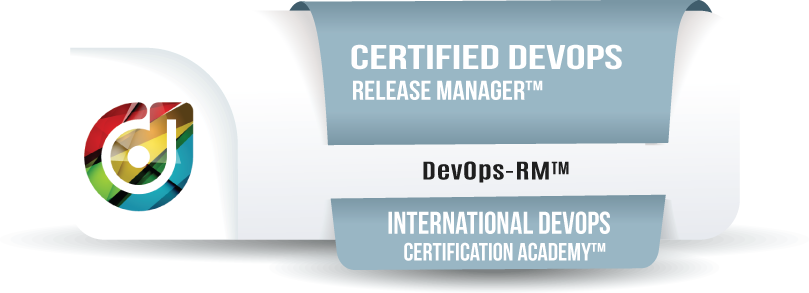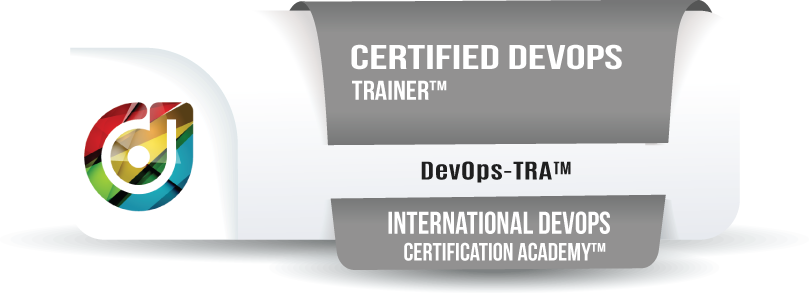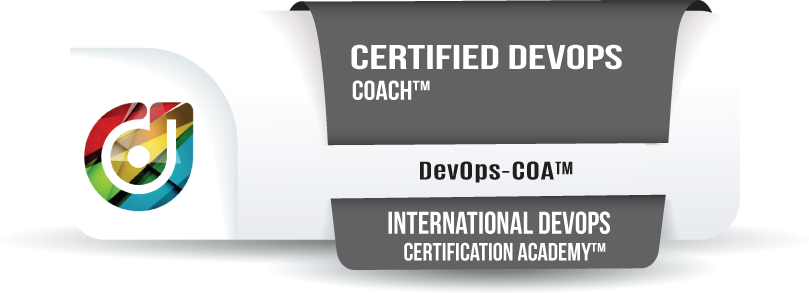DevOps Certification Test Questions and Answers
The Most Realistic 50 Sample Exam Questions
Check out your Example DevOps Certification Practice Test Questions which are very similar to your Official DevOps Certification Test Questions from International DevOps Certification Academy™.
Once you study questions and answers for your DevOps Certification Program you would love to pursue, you can feel absolutely confident to pass your Official DevOps Certification exam.
Welcome to our comprehensive collection of Example DevOps Certification Test Questions, meticulously crafted to mirror the structure and complexity of the Official DevOps Certification Test Questions from the International DevOps Certification Academy™. As you navigate through these 50 Exam Samples, you'll find an array of scenarios and challenges that closely resemble what you might encounter in your actual DevOps Certification exam. Whether you are an aspiring DevOps engineer preparing for an upcoming certification or an IT professional looking to enhance your skills, these questions cover a spectrum of topics, from software development and infrastructure to collaboration and troubleshooting.
Dive into the intricacies of integration, exploring how different tools play a pivotal role in the software development lifecycle. Tackle interview questions that delve into your understanding of configuration management, virtualization, and containers. Gain insights into the importance of infrastructure as code (IaC) and its role in orchestrating scalable and high-performance solutions. These questions are not just a set of standalone queries but are strategically designed to simulate real-world scenarios, reflecting the dynamic nature of DevOps practices in today's job market.
As you progress through these exam samples, you'll find that each question is a crucial part of a broader narrative, emphasizing the collaborative aspects of DevOps practices. Remember that scalability makes difference in the technology and infrastructure perception of DevOps end users. Understand the steps involved in build processes, scripting for automation, and effective management of configurations. Uncover the significance of collaboration among team members and the integration of diverse tools to optimize your DevOps environment. Whether you are a seasoned DevOps professional or just starting your journey, these questions touch upon key aspects that bridge the gap between traditional IT roles and the evolving landscape of DevOps.
Reports show that by practicing a range of DevOps certification exam and job interview questions and answers, a person can be better prepared to:
- Gain a competitive edge in your official DevOps certification test and your job interview by mastering DevOps test questions that cover essential topics such as software development, infrastructure, and configuration management.
- Enhance your understanding of industry-standard tools and practices used in DevOps, ensuring you are well-prepared to handle integration, orchestration, and scripting tasks in a real-world job setting.
- Acquire valuable insights into the different steps, processes, and troubleshooting techniques involved in software development, making you a more proficient and capable DevOps engineer.
- Elevate your expertise in infrastructure as code (IaC), containers, and virtualization, providing you with a comprehensive skill set to excel in managing scalable and high-performance environments.
- Foster effective collaboration with others by grasping the nuances of collaboration practices and build a solid foundation to contribute significantly to the success of any DevOps team or project.
![Example DevOps Certification Test Questions [2025/26] Example DevOps Certification Test Questions [2025/26]](https://www.devops-certification.org/devops_images/devops-test-questions.jpg)
Example DevOps Certification Test Questions [2025]
By immersing yourself in these practice tests, you'll not only be better prepared for your DevOps Certification Program but also gain a deeper understanding of the core principles and best practices that underpin successful DevOps implementations. As you master the art of troubleshooting and explore the nuances of performance testing, you'll be equipped to excel not just in an exam setting but also in real-world scenarios where DevOps expertise is in high demand. So, embark on this journey, enhance your knowledge, and feel the confidence to excel in your Official DevOps Certification exam.
Question 1
Which one of the following methodologies does least impact the establishment of DevOps methodology?
- Choice-1: Lean Manufacturing.
- Choice-2: Agile Software Delivery.
- Choice-3: Waterfall Software Delivery.
- Choice-4: Continuous Software Delivery.
Correct Answer: Choice-3 / Waterfall Software Delivery.
Question 2
In typical IT organizations why is there a typical conflict between development and operations teams?
- Choice-1: Because they come from different backgrounds.
- Choice-2: Because development team knows more about software products and services.
- Choice-3: Because operations team knows more about test and production environments.
- Choice-4: Because they have conflicting business goals and priorities.
Correct Answer: Choice-4 / Because they have conflicting business goals and priorities.
Question 3
Which one of the following techniques makes DevOps a successful methodology to develop and deliver software?
- Choice-1: DevOps enables you to organize your teams around your organizational mission.
- Choice-2: DevOps enables you to create your software with built-in quality and monitoring.
- Choice-3: DevOps enables you to quickly identify, fix and learn from errors.
- Choice-4: All above choices.
Correct Answer: Choice-4 / All above choices.
Question 4
Which one of the following statements about DevOps is incorrect?
- Choice-1: DevOps is only suitable for start-up companies.
- Choice-2: DevOps is suitable for brownfield software products and services.
- Choice-3: DevOps is suitable for greenfield software products and services.
- Choice-4: Some of the most exemplary DevOps initiatives started in companies with giant and mature IT organizations.
Correct Answer: Choice-1 / DevOps is only suitable for start-up companies.
Question 5
How does a DevOps organization act in principle when it comes to financing its work?
- Choice-1: It finances special projects to serve its clients.
- Choice-2: It finances products and services to serve its clients.
- Choice-3: It finances teams in matrix organizations and these teams are responsible for handling their own budgets.
- Choice-4: It finances development and operations teams separately, so they take care of their own business.
Correct Answer: Choice-2 / It finances products and services to serve its clients.
Question 6
In a DevOps organization which one of the following elements does not directly contribute to your value stream?
- Choice-1: DevOps team.
- Choice-2: Stakeholders of downstream work centers.
- Choice-3: Errors, incidents and fixes.
- Choice-4: Clients.
Correct Answer: Choice-3 / Errors, incidents and fixes.
Question 7
Why is it a good idea to limit batch size of your continuous DevOps deliveries?
- Choice-1: You will be quicker to identify root causes of issues and resolve them.
- Choice-2: By continuously delivering in production, your team will have the constant pride of contributing your organizational mission.
- Choice-3: Potentially required rollbacks from your production systems will be less cumbersome.
- Choice-4: All above choices.
Correct Answer: Choice-4 / All above choices.
Question 8
What is trunk in trunk based DevOps delivery?
- Choice-1: Developers collaborate on code in a single branch called “trunk”.
- Choice-2: Trunk is a special private branch in a developer workstation.
- Choice-3: Trunk is the process of merging code in DevOps deliveries.
- Choice-4: Trunk is a special source code version controlling system which stores mission critical special projects of your DevOps organization.
Correct Answer: Choice-1 / Developers collaborate on code in a single branch called “trunk”.
Question 9
Which one of the following is not one of the DevOps principles for good test automation?
- Choice-1: Test Automation should give quick and early feedback about your quality of work.
- Choice-2: Never mix test driven development (TDD) together with your test automation approach.
- Choice-3: Tests should generate consistent, deterministic and repeatable results provided same conditions for different test runs.
- Choice-4: With your test automation, avoid slow and periodic feedback. What you need is fast feedback whenever you or your developer attempts to check-in code to your trunk.
Correct Answer: Choice-2 / Never mix test driven development (TDD) together with your test automation approach.
Question 10
Which one of following release patterns does not enable you to do low risk DevOps code deployments in your production systems?
- Choice-1: Canary Deployment Pattern (The Dark Launch).
- Choice-2: Blue-Green Deployment Pattern.
- Choice-3: Cluster Immune System Release Pattern.
- Choice-4: Big bang code deployments of fully tested and validated releases.
Correct Answer: Choice-4 / Big bang code deployments of fully tested and validated releases.
Question 11
What is one of best techniques to convert normal changes into standard changes?
- Choice-1: Use your track record of successful automated deployments with standard changes.
- Choice-2: Negotiate with release managers.
- Choice-3: Publicly complain about bureaucracy and make everyone be aware of it.
- Choice-4: Make sure normal changes are very carefully deployed to your production systems.
Correct Answer: Choice-1 / Use your track record of successful automated deployments with standard changes.
Question 12
What is a widely used reusable asset to reinforce information security of deliverables from your DevOps team?
- Choice-1: Data storage systems.
- Choice-2: Handling the logging of sensitive client information.
- Choice-3: Data transfer between clients and software.
- Choice-4: All above choices.
Correct Answer: Choice-4 / All above choices.
Question 13
What is not one of major benefits of designing a safe system of work culture?
- Choice-1: Complexity of your systems will be managed, so problems in designs and operations will be quickly detected.
- Choice-2: DevOps team does no longer need to be careful and mindful to ensure quality.
- Choice-3: Problems are quickly resolved while they are small. Resolving problems will result in spontaneous construction of new organizational knowledge and experience.
- Choice-4: Leaders in your DevOps organization develop other leaders who create and continuously improve safe systems of work.
Correct Answer: Choice-2 / DevOps team does no longer need to be careful and mindful to ensure quality.
Question 14
What is telemetry?
- Choice-1: Telemetry is a widely known SaaS tool to plan and execute DevOps projects.
- Choice-2: Telemetry is a communication tool used by DevOps teams at geographically distributed locations.
- Choice-3: Telemetry is the process of recording the behaviour of your systems.
- Choice-4: Telemetry is a tool to design, code and execute automated unit tests.
Correct Answer: Choice-3 / Telemetry is the process of recording the behaviour of your systems.
Question 15
In terms of fixing errors in your production systems what is the major benefit of using feature toggles embedded in configurations of your software applications?
- Choice-1: This is easiest way to fix a problem. It doesn’t require an urgent code deployment.
- Choice-2: You don’t have to very urgently correct erroneous pieces in your deployment.
- Choice-3: Your DevOps team can take time to properly identify root cause of an issue and improve their techniques to ensure such a problem will not likely happen again in the future.
- Choice-4: All above choices.
Correct Answer: Choice-4 / All above choices.
Question 16
Certain companies utilize immutable deployment, in which changes to the system are _____ as opposed to _____.
- Choice-1: Changes are temporarily implemented, allowing adjustments post-deployment.
- Choice-2: Changes are dynamically applied, enabling real-time system modifications.
- Choice-3: Changes are rolled back automatically if any issues arise during deployment.
- Choice-4: Changes are stored in a separate environment for future manual application.
Correct Answer: Choice-1 / Changes are temporarily implemented, allowing adjustments post-deployment.
Question 17
Suppose your dev team has frequent issues with an ops teams in your company. Blame is often tossed around between both groups. how would you solve this issue?
- Choice-1: Implement a shared incident tracking system to streamline issue reporting, root cause analysis, and resolution efforts, fostering a sense of joint responsibility.
- Choice-2: Assign a mediator with expertise in DevOps practices to facilitate constructive dialogues and mediate conflict resolution between the dev and ops teams.
- Choice-3: Initiate a collaborative workshop involving both dev and ops teams to openly discuss challenges, identify common goals, and establish better communication channels.
- Choice-4: Establish cross-functional teams with members from both dev and ops, encouraging collaboration on projects to build mutual understanding and trust.
Correct Answer: Choice-3 / Initiate a collaborative workshop involving both dev and ops teams to openly discuss challenges, identify common goals, and establish better communication channels.
Question 18
Devops supports the elimination of _____ because it can hamper collaboration, operations and morale within the company.
- Choice-1: Excessive Documentation, which tends to create bottlenecks and hinder effective communication.
- Choice-2: Siloed Development, as it impedes the flow of information and slows down the overall delivery process.
- Choice-3: Traditional Waterfall Methodology, which lacks agility and responsiveness to changing requirements.
- Choice-4: Manual Testing Practices, as they introduce delays and are prone to human errors.
Correct Answer: Choice-2 / Siloed Development, as breaking down organizational silos is a key aspect of fostering collaboration and efficiency in DevOps.
Question 19
There is a new team recruited for project and that project is handled in Devops ...
- Choice-1: Assemble the team and commence the project without a defined workflow, allowing each member to follow their preferred methods.
- Choice-2: Initiate a comprehensive DevOps process, involving collaboration, continuous integration, and automated testing to ensure efficient software delivery.
- Choice-3: Assign specific tasks to team members without emphasizing communication and collaboration, relying solely on individual expertise.
- Choice-4: Implement rigid project management practices without considering the principles of flexibility and continuous improvement.
Correct Answer: Choice-2 / Initiating a comprehensive DevOps process, involving collaboration, continuous integration, and automated testing to ensure efficient software delivery.
Question 20
Suppose you want to test the resilience of your company’s e-commerce website in preparation for the holiday shopping season. how would having a chaos monkey test the abilities of your servers?
- Choice-1: By optimizing code and reducing latency to ensure smooth performance during peak traffic, enhancing the website's overall resilience.
- Choice-2: By conducting load testing to measure the website's capacity and scalability, identifying potential bottlenecks in the server infrastructure.
- Choice-3: By implementing strict access controls and security measures to protect the website from cyber threats and potential server vulnerabilities.
- Choice-4: By simulating random failures and disruptions to assess the system's ability to recover and maintain functionality under unexpected conditions.
Correct Answer: Choice-4 / By simulating random failures and disruptions to assess the system's ability to recover and maintain functionality under unexpected conditions.
Question 21
The XYZ organization is undergoing a major overhaul of its software development lifecycle, aiming to adopt a DevOps culture. As the DevOps consultant, you are tasked with implementing continuous integration practices. In this context, what is a primary benefit of incorporating automated testing into the CI/CD pipeline?
- Choice-1: Accelerates the software release cycle by reducing manual testing efforts.
- Choice-2: Introduces delays in the CI/CD pipeline due to the time required for automated tests.
- Choice-3: Increases collaboration between development and operations teams.
- Choice-4: Automated testing is irrelevant in the context of continuous integration.
Correct Answer: Choice-1 / Accelerates the software release cycle by reducing manual testing efforts.
Question 22
The company ABC is adopting Infrastructure as Code (IaC) to manage its cloud-based infrastructure. As the DevOps engineer, you are tasked with selecting an appropriate IaC tool. Considering the need for declarative syntax and ease of collaboration among team members, which tool would be most suitable for ABC's DevOps practices?
- Choice-1: Terraform
- Choice-2: Puppet
- Choice-3: Chef
- Choice-4: Ansible
Correct Answer: Choice-1 / Terraform
Question 23
In a DevOps environment, effective collaboration between development and operations teams is crucial. As the DevOps manager, you want to implement practices that enhance communication and cooperation. Which collaboration tool or platform would be most suitable for fostering real-time collaboration and knowledge sharing among team members?
- Choice-1: GitLab
- Choice-2: Jenkins
- Choice-3: Slack
- Choice-4: Docker
Correct Answer: Choice-3 / Slack
Question 24
As part of the DevOps practices, continuous monitoring and performance optimization are crucial. You are tasked with improving the scalability and performance of a web application. Which technology or approach would be most effective in achieving these objectives?
- Choice-1: Traditional virtualization
- Choice-2: Containerization with Docker
- Choice-3: Configuration Management with Ansible
- Choice-4: Scripting with Python
Correct Answer: Choice-2 / Containerization with Docker
Question 25
The DevOps team at Microsoft Azure Corp is transitioning from manual to automated deployment processes. To ensure a smooth transition, the team decides to implement Blue-Green deployment. What is the primary advantage of using Blue-Green deployment in the context of minimizing downtime during releases?
- Choice-1: Allows for rollback to the previous version in case of issues.
- Choice-2: Requires minimal automation tools for implementation.
- Choice-3: Deploys changes gradually to reduce the impact on users.
- Choice-4: Completely halts the production environment during deployment.
Correct Answer: Choice-3 / Deploys changes gradually to reduce the impact on users.
Question 26
At Amazon AWS Inc., the DevOps team is implementing a microservices architecture for their software applications. During the development phase, they encounter challenges related to inter-service communication and discover the need for a solution that can handle service discovery and load balancing. Which tool or technology would you recommend to address these challenges effectively?
- Choice-1: NGINX as an API Gateway
- Choice-2: Kubernetes for Container Orchestration
- Choice-3: Consul for Service Mesh
- Choice-4: Splunk for Log Management
Correct Answer: Choice-3 / Consul for Service Mesh
Question 27
The DevOps team at Tech Innovators is looking to implement a robust incident response plan. Considering best practices, what is a key element to include in an effective incident response plan to minimize the impact of incidents on the organization's IT infrastructure?
- Choice-1: Delay communication until the incident is fully resolved.
- Choice-2: Include only technical details in incident reports.
- Choice-3: Collaborate with external stakeholders during incident resolution.
- Choice-4: Minimize documentation to expedite incident resolution.
Correct Answer: Choice-3 / Collaborate with external stakeholders during incident resolution.
Question 28
The DevOps team at Global Solutions is planning to implement a CI/CD pipeline for a complex software application. Considering the importance of automated testing in the pipeline, what type of testing is most appropriate for validating the overall functionality and user experience of the application?
- Choice-1: Unit Testing
- Choice-2: Integration Testing
- Choice-3: System Testing
- Choice-4: Acceptance Testing
Correct Answer: Choice-4 / Acceptance Testing
Question 29
The DevOps team at Google Cloud Computing is tasked with improving the efficiency of their continuous delivery process. What practice can significantly contribute to achieving faster and more reliable software releases by automating the build, test, and deployment stages?
- Choice-1: Manual Deployment
- Choice-2: Feature Branching
- Choice-3: Continuous Integration
- Choice-4: Periodic Code Review
Correct Answer: Choice-3 / Continuous Integration
Question 30
The DevOps team at Agile Innovations is adopting a containerization strategy using Docker for their microservices. To optimize resource utilization, what is a key benefit of using containers compared to traditional virtual machines?
- Choice-1: Containers provide stronger isolation between applications.
- Choice-2: Containers have a smaller footprint and faster startup times.
- Choice-3: Containers are suitable only for monolithic applications.
- Choice-4: Containers are less portable across different environments.
Correct Answer: Choice-2 / Containers have a smaller footprint and faster startup times.
'
Question 31
The DevOps team at Agile Innovations is adopting a containerization strategy using Docker for their microservices. To optimize resource utilization, what is a key benefit of using containers compared to traditional virtual machines?
- Choice-1: Containers provide stronger isolation between applications.
- Choice-2: Containers have a smaller footprint and faster startup times.
- Choice-3: Containers are suitable only for monolithic applications.
- Choice-4: Containers are less portable across different environments.
Correct Answer: Choice-2 / Containers have a smaller footprint and faster startup times.
Question 32
As the lead DevOps engineer at Innovation Labs, you are tasked with implementing a robust logging and monitoring system for a cloud-based application. Considering the need for centralized log management and real-time insights into system performance, which tool or technology would be most suitable for this purpose?
- Choice-1: Elasticsearch with Kibana
- Choice-2: Jenkins for Continuous Integration
- Choice-3: Docker for Containerization
- Choice-4: Ansible for Configuration Management
Correct Answer: Choice-1 / Elasticsearch with Kibana
Question 33
The DevOps team at Global Innovators is planning to implement a disaster recovery plan for their critical applications. What is a key consideration when designing a reliable disaster recovery plan to minimize downtime and data loss?
- Choice-1: Performing manual backups at regular intervals
- Choice-2: Using a single data center for all critical applications
- Choice-3: Regularly testing the disaster recovery procedures
- Choice-4: Keeping the disaster recovery plan confidential within the IT team
Correct Answer: Choice-3 / Regularly testing the disaster recovery procedures
Question 34
The DevOps team at Agile Solutions is facing challenges with maintaining consistency across different environments. What practice or tool can help ensure that the development, testing, and production environments are aligned, reducing the risk of deployment issues?
- Choice-1: Using different tools for each environment
- Choice-2: Implementing Configuration Management with Ansible
- Choice-3: Dependent on manual configuration for each environment
- Choice-4: Ignoring consistency to prioritize faster releases
Correct Answer: Choice-2 / Implementing Configuration Management with Ansible
Question 35
As a DevOps professional at Microsoft Azure DevOps Enterprises, you are tasked with implementing continuous delivery practices. What is a key benefit of continuous delivery in ensuring a reliable and efficient software release process?
- Choice-1: Delaying releases to ensure extensive manual testing
- Choice-2: Minimizing the frequency of software releases
- Choice-3: Automating the entire software release process
- Choice-4: Releasing software only during business hours
Correct Answer: Choice-3 / Automating the entire software release process
Question 36
At Tech Solutions, the DevOps team is tasked with selecting a suitable container orchestration tool for managing a large-scale microservices architecture. Considering the need for automatic scaling, service discovery, and load balancing, which container orchestration tool would be most appropriate for this scenario?
- Choice-1: Docker Compose
- Choice-2: Kubernetes
- Choice-3: Amazon ECS
- Choice-4: OpenShift
Correct Answer: Choice-2 / Kubernetes
Question 37
The DevOps team at Global Innovations is working on optimizing the deployment process. They are considering implementing canary releases. What is a primary advantage of using canary releases in a deployment strategy?
- Choice-1: Rolling back changes is challenging in canary releases.
- Choice-2: Changes are deployed to the entire user base simultaneously.
- Choice-3: Allows gradual release to a subset of users for testing.
- Choice-4: Canary releases require longer deployment times.
Correct Answer: Choice-3 / Allows gradual release to a subset of users for testing.
Question 38
As part of the DevOps process, the team at Amazon Web Services (AWS DevOps) Innovations is implementing automated security checks in the CI/CD pipeline. What is a key benefit of integrating security checks early in the development lifecycle?
- Choice-1: Security checks are irrelevant in the CI/CD pipeline.
- Choice-2: Security issues can be identified and addressed early.
- Choice-3: Security checks only need to be performed during manual testing.
- Choice-4: Automated security checks increase deployment time significantly.
Correct Answer: Choice-2 / Security issues can be identified and addressed early.
Question 39
The DevOps team at Red Hat DevOps Solutions is adopting a microservices architecture. To ensure efficient communication between microservices, they need a solution for service discovery. Which tool or technology would you recommend for implementing service discovery in a microservices environment?
- Choice-1: NGINX as an API Gateway
- Choice-2: Consul for Service Discovery
- Choice-3: Kubernetes for Container Orchestration
- Choice-4: Docker Compose
Correct Answer: Choice-2 / Consul for Service Discovery
Question 40
The DevOps team at Innovation Solutions is facing challenges with managing configuration drift in their infrastructure. What practice or tool can help mitigate configuration drift and ensure consistency across servers?
- Choice-1: Manual Configuration Management
- Choice-2: Periodic Configuration Audits
- Choice-3: Implementing Infrastructure as Code (IaC)
- Choice-4: Ignoring configuration drift to prioritize faster releases
Correct Answer: Choice-3 / Implementing Infrastructure as Code (IaC)
Question 41
The DevOps team at Digital Innovations is implementing a Continuous Integration (CI) pipeline for a large-scale project. What is a key benefit of parallelizing test execution in the CI pipeline?
- Choice-1: Increases the likelihood of integration issues.
- Choice-2: Reduces the overall speed of the CI pipeline.
- Choice-3: Decreases the chances of detecting defects early in the process.
- Choice-4: Shortens the feedback loop by executing tests concurrently.
Correct Answer: Choice-4 / Shortens the feedback loop by executing tests concurrently.
Question 42
The DevOps team at Red Hat DevOps Global Solutions is exploring options for version control to manage their codebase efficiently. Considering the need for distributed version control and robust branching capabilities, which version control system would be most suitable for their requirements?
- Choice-1: Subversion (SVN)
- Choice-2: Git
- Choice-3: Mercurial
- Choice-4: Perforce (Helix Core)
Correct Answer: Choice-2 / Git
Question 43
The DevOps team at Tech Solutions is planning to implement a canary release strategy for their web application. What precautionary measure should be taken to minimize the impact on users during the canary release?
- Choice-1: Deploy the canary release to the entire user base simultaneously.
- Choice-2: Monitor user feedback and system metrics during the canary release.
- Choice-3: Delay the canary release until all issues are fully resolved.
- Choice-4: Exclude user feedback during the canary release for faster deployment.
Correct Answer: Choice-2 / Monitor user feedback and system metrics during the canary release.
Question 44
The DevOps team at Innovation Corp is transitioning from a monolithic architecture to microservices. What is a key advantage of microservices architecture in terms of scalability compared to a monolithic architecture?
- Choice-1: Microservices have higher resource requirements than monolithic applications.
- Choice-2: Scaling individual components independently to handle varying workloads.
- Choice-3: Microservices limit the overall scalability of the application.
- Choice-4: Scaling is not a concern in microservices architecture.
Correct Answer: Choice-2 / Scaling individual components independently to handle varying workloads.
Question 45
The DevOps team at Microsoft DevOps Azure Solutions is implementing automated deployment pipelines. What is a key advantage of using immutable infrastructure in the deployment process?
- Choice-1: Requires manual configuration for each deployment.
- Choice-2: Allows for in-place updates to running infrastructure.
- Choice-3: Minimizes consistency across different environments.
- Choice-4: Enables reproducible and consistent deployments with pre-built images.
Correct Answer: Choice-4 / Enables reproducible and consistent deployments with pre-built images.
Question 46
The DevOps team at Digital Innovations is facing challenges with versioning and dependency management in their microservices architecture. What tool or practice would you recommend to address these challenges and ensure smooth collaboration between development and operations teams?
- Choice-1: Using a monolithic architecture for better control over dependencies.
- Choice-2: Implementing Continuous Integration (CI) for automated builds.
- Choice-3: Utilizing containerization with Docker for dependency isolation.
- Choice-4: Implementing a Package Manager for version control and dependency resolution.
Correct Answer: Choice-4 / Implementing a Package Manager for version control and dependency resolution.
Question 47
The DevOps team at DevOps Foundation Inc (Part of DevOps Institute) is considering the adoption of a hybrid cloud strategy. What is a key advantage of a hybrid cloud approach compared to a purely on-premises or public cloud solution?
- Choice-1: Reduced flexibility in choosing cloud providers.
- Choice-2: Higher costs associated with data transfer between on-premises and the cloud.
- Choice-3: Optimized for either fully on-premises or fully public cloud solutions.
- Choice-4: Allows flexibility to choose the best environment for specific workloads.
Correct Answer: Choice-4 / Allows flexibility to choose the best environment for specific workloads.
Question 48
As a DevOps engineer at AWS DevOps Certification Services, you are tasked with improving the security posture of the CI/CD pipeline. What security practice should be implemented to detect and address vulnerabilities in third-party dependencies during the build process?
- Choice-1: Manual code review by security experts.
- Choice-2: Regularly updating dependencies without security analysis.
- Choice-3: Implementing automated Dependency Scanning in the CI/CD pipeline.
- Choice-4: Ignoring third-party dependencies to prioritize faster builds.
Correct Answer: Choice-3 / Implementing automated Dependency Scanning in the CI/CD pipeline.
Question 49
The DevOps team at Innovation Solutions is adopting Infrastructure as Code (IaC) for managing their cloud infrastructure. What is a key advantage of using IaC in terms of infrastructure provisioning and configuration?
- Choice-1: Manual intervention for each infrastructure change.
- Choice-2: Infrastructure changes performed only by the operations team.
- Choice-3: Reproducible and version-controlled infrastructure changes.
- Choice-4: Infrastructure changes documented in a separate manual document.
Correct Answer: Choice-3 / Reproducible and version-controlled infrastructure changes.
Question 50
The DevOps team at Tech Innovators is implementing a zero-trust security model for their infrastructure. What is a key principle of the zero-trust model in ensuring security?
- Choice-1: Granting unrestricted access based on user roles.
- Choice-2: Relying solely on perimeter security measures.
- Choice-3: Assuming trust only within the internal network.
- Choice-4: Verifying and authenticating all users and devices, regardless of location.
Correct Answer: Choice-4 / Verifying and authenticating all users and devices, regardless of location.
Register Your DevOps Certification >>
 DEVOPS-CERTIFICATION.ORG
DEVOPS-CERTIFICATION.ORG![Example DevOps Certification Test Questions [2025/26] Example DevOps Certification Test Questions [2025/26]](https://www.devops-certification.org/devops_images/devops-test-questions.jpg)

